The Saints of Italy
Discovering 30 of the Italian saints. Like any other known people or leaders of the world, there are also great men and women in the Catholic Church. They did extraordinary work, and that’s why they are known as saints. Some of the Italian saints were martyrs.
30 Italian Saints You Need to Know About
1. Angela Merici
Angela Merici was born around 1470 in Desenzano, Italy. Angela was still a young girl when her parents died. She was raised by her uncle, who later died as well. She loved God so much that she spent most of her time praying. After her uncle’s death, Angela went to Brescia, Italy, where she came up with a school for young women. A wealthy family helped her set up the school.
She taught the young women about God. During that time, Pope Clement VII gave her the responsibility of being in charge of a group of nurses. With time, she wanted to take care of the sick and poor people in the community. Together with other women, they united and called themselves ‘The Ursulines’ after St Ursula.
They took care of the sick, and they still do it to date. You will find the Ursuline community throughout the world teaching and caring for the needy.
Angela died in 1540. Her body lies at Brescia in the church of St. Afra. 1n 1768, she was beatified by Pope Clement XIII, and in 1807, he was canonized by Pope Pius VII.
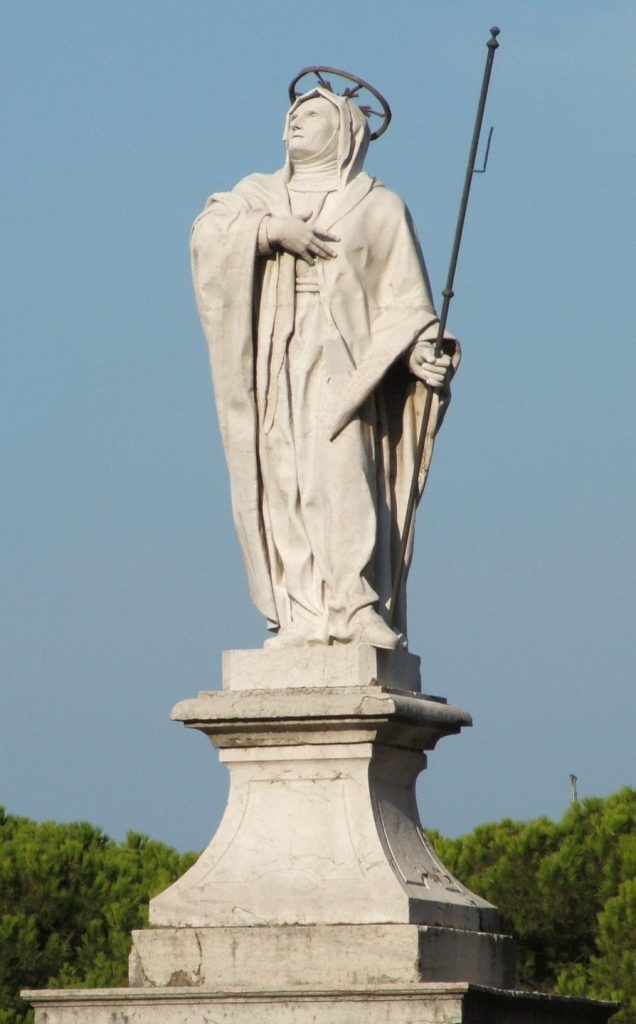
2. Thomas Aquinas
Thomas Aquinas was born around 1225-1227. When he was approximately five years old, Thomas was sent to study with the Benedictine monks. Being a bright student, he was sent to further his studies at the University in Naples. He studied Science, Grammar, Music, Logic, and Mathematics. He joined the Dominicans, a religious order that St. Dominic founded.
His parents always wanted him to join the Benedictine monks, but he never changed his mind. He was even locked in a castle for two years, but he escaped and went to join the Dominicans. He went to Rome after making his vows. He informed Pope Innocent IV of his predicament, and the Pope advised his parents to stop interfering with his vocation.
Thomas was then sent to Paris to study, and then he went to teach in Cologne. He was a great author of Theology and Philosophy who wrote more than 60 works that are still popular. He always believed that people needed to be educated about Faith, and that’s what he did.
He died in 1274 at Cistercian Monastery of Fossa Nuova, and Pope John XXII canonized him in 1323. He was named a Doctor of the church in 1567 and is the patron saint of Catholic students and universities.
3. Hyacintha of Mariscotti
Mariscotti came from a wealthy family in Viterbo, Italy. When she was 20 years old, she wanted to get married to a Marquess, a nobleman. Unfortunately, the Marquess married her sister. She became so furious, and her parents convinced her to join the Monastery of St. Bernadine. She became a member of the Third Order Regular of St. Francis, where she was named Hyacintha.
She loved material things even when she became a nun. She was once asked to change her ways by a priest. After a serious illness, Hyacintha realized she wasn’t living her vows; she gave away all her nice clothes and shoes.
A plague broke out in Viterbo, and she nursed the sick. She organized groups that gathered money and food for the poor, sick, and elderly. She died in 1640 at the age of 55. She was named a saint by Pope Pius VII in 1807.
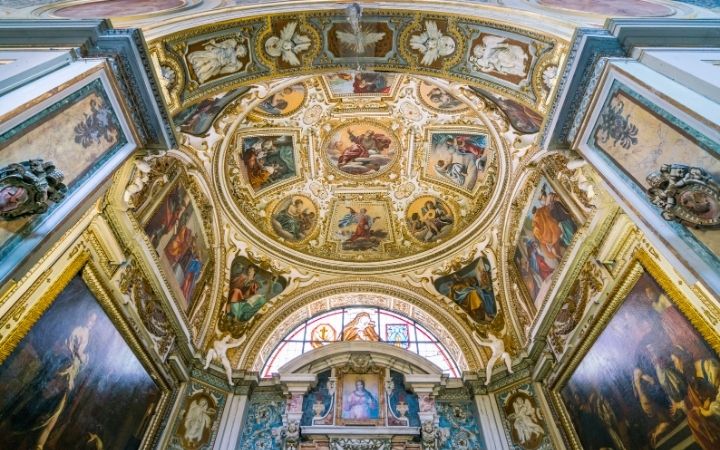
4. John Bosco
John Bosco was born in Becchi, Italy, in 1815. He loved God, and that’s why he was a shepherd. Later on, John Bosco went to the seminary to study, and in 1841, he was ordained as a priest. He fathered many children by starting a school for poor boys. At the school, John taught them about music and how to make shoes, books, and clothes. He also taught them about God.
Later on, he started a similar school for girls. Many boys and girls needed help; he started the Salesians, a group of priests that helped boys. Girls were helped by a group of nuns called Daughters of Mary Help of Christians.
He died in 1888 at the age of 73. He left around 250 Salesian houses. He was canonized in 1934.
5. Maria Domenica Mantovani
Maria Domenica was born in a small Italian village in 1862. Her greatest desires were her love for God and helping people. Blessed Giuseppe Nascimbeni encouraged her to teach young children about religion and also help the sick.
When Maria was 30 years old, Blessed Nascimbeni came up with a Religious Order for women called; The Congregation of the Holy Family’s Little Sisters. Through this order, many needy people were helped. Maria joined the order, and she was named Mother Maria of the Immaculate. Everyone called her ‘mother.’
She became the Superior of the order. Many people loved her, and they always approached her to be advised. She died in 1934 and was declared ‘Blessed’ in 2003.
6. Agatha of Sicily
Agatha was born in Sicily. During her time, Christians were persecuted. They were asked to deny their God, who had raised Jesus to new life. Those who refused were killed and hence became martyrs. Agatha was one of these martyrs.
She remained a virgin in her teenage years. A man by the name of Quintianus wanted to marry her, but she refused. It was for this reason that Quintianus reported her to the officials about being a Christian. She was tortured and then killed around 251-253 AD.
St. Agatha’s intercession is always invoked in some parts of Italy against lightning, fire, and volcanic eruptions.
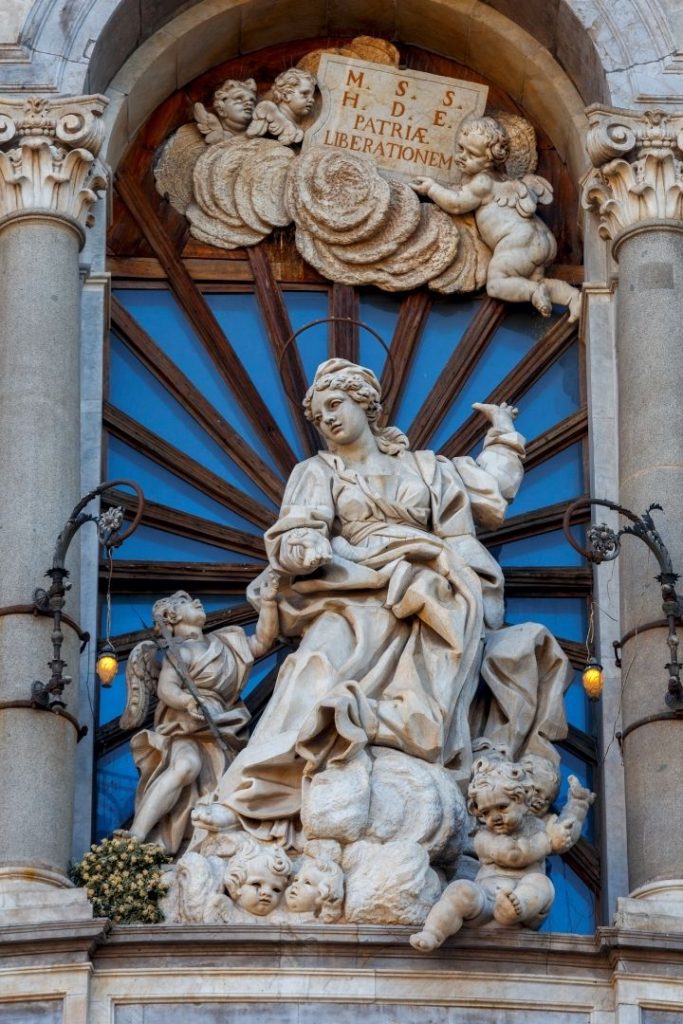
7. Pius IX (Giovanni Maria Mastai-Ferretti), Pope
Pius IX was born in 1791 in Italy. He grew up always wanting to be a priest. He followed his dream until he was ordained in 1819. He was sent to an orphanage, and his love for children was evident. Later, he was sent to South America to work for a church official.
When he came back to Italy, he became the archbishop of a diocese. A revolution ensued, and he became the peacemaker by convincing the two sides to stop fighting. He was later moved to a larger diocese and made the cardinal. He was elected Pope when Pope Gregory XVI died. He chose the name Pius IX.
He died in 1878 and beatified by Pope John Paul II in 2000. He helped in the growth of the understanding of what Catholics believed in.
8. Scholastica of Nursia
In the year 480, Scholastica and her twin Benedict were born in Nursia. They loved God, and this made people tell them to come up with a group for praising God. Benedict built a monastery in Monte Cassino in Italy.
On the other hand, Scholastica and another group of women built a convent in Plombariola. They would meet seven times a week to pray and praise God. At the age of 62, Scholastica died and was buried by Benedictine next to Monte Cassino.
A short time later, her brother Benedictine died, and his monks buried him next to Scholastica.
St. Scholastica’s name is always invoked against rain and storms. She is the patron saint of nuns.
9. Valentine of Rome
In the early church, he was a priest and also a doctor. He helped people whenever they were sick. Apart from taking care of the sick, he also taught people how to follow Jesus. He was persecuted because of his Faith. He was a well-known Christian leader, and that’s why he was arrested and later killed.
While in prison, he wrote letters that encouraged other Christians who were in jail. The content of the letters was the love of Jesus. This is how the tradition of sending love during Valentine’s Day began. He was killed around the years 269-273. He is the patron of happy marriages, engaged couples, and love.
10. Fra Angelico
His name was Guido di Pietro. Fra Angelico was his Christian name. He was born in 1387 in a small town in Italy. Growing up, he was interested in following Jesus Christ’s example and developing his talent in painting. He painted very well that his community members said he painted like an angel. That is where his name “Fra Angelico” arose.
He painted great paintings of saints on the chapel’s walls of Pope Eugenius IV and Pope Nicholas V. Most museums and churches around the world have his paintings. He died in 1455 in Rome and was beatified in 1982 by Pope John Paul II.
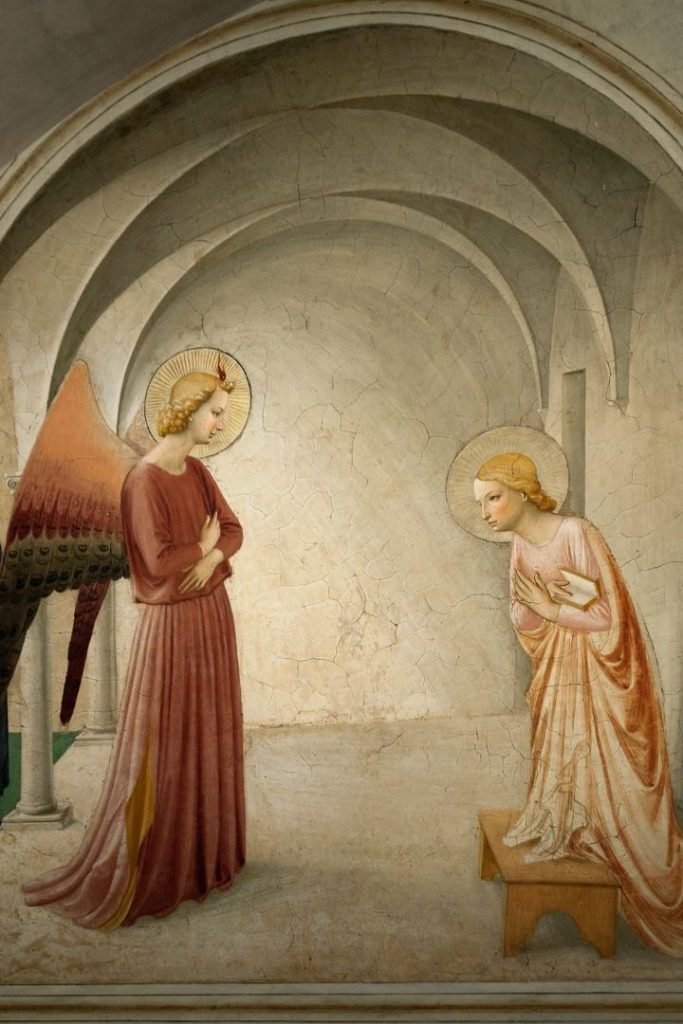
11. Peter Damian
Peter was born in 1007 in Italy. He lived with his brother after the death of his parents. After mistreatment from his brother, he went to live with another brother who took him to school. Being a bright student, he became a professor at the age of 25. He would invite the poor and some students to his home for dinners.
He later became a monk and priest. He spent most of his time praying and studying. He established new monasteries and was also ordained as a bishop of Ostia, a diocese near Rome. He died in 1072, and he was always considered a Doctor of the church.
12. Catherine of Bologna
Catherine was born in 1413 in Bologna, Italy. She was talented in drawing, and she also realized that God was calling her to a prayerful life. Catherine later joined a group of young women that performed good deeds in Jesus’ name and prayed together.
Later on, the women, together with Catherine, joined an order of nuns called the Poor Clares. She was made in charge of the order or the ‘superior.’ She also wrote books and poems about Christianity. You can find most of her artwork in Venice. She died in 1463 and was canonized in 1712.
13. Benedict the Black
Benedict was born in 1524. He worked as a farmer, and later on, he joined a group of prayerful men who devoted their lives to God. Benedict was appointed to train the young men who joined the order. He inspired others to grow, loving God and helping the needy.
He would give advice and pray for people that visited him. He was loved by so many that when he died in 1589, a special tomb was made for him courtesy of Spain’s king. He is the patron saint of African missions and persons from Africa. He was canonized in 1807 by pope Pius VII.
14. Margaret of Castello
She was born in Florence, Italy, in the year 1287. Margaret was born blind and with leg and spine problems. Her parents hid her and told people that she had died. Only her parish priest would visit her. The priest taught her about God’s love and the Catholic Faith.
Being a teenager, she was taken to a Franciscan shrine in Castello by her parents. They hoped that she would be healed. When it didn’t happen, they left her in that strange city. She later met members of the Dominican order, and they invited her to join them. They visited the sick and prisoners, and many people admired her.
At the age of 33, she died. She was declared ‘blessed’ in 1609. Those who suffer from muscular and eye illnesses pray to her. She is the patron of children with disabilities.
15. Leo IX
Pope Leo IX was born in 1002 and named Bruno. He served as a priest at the cathedral before becoming the bishop of Toul. After twenty years, he was appointed as Pope. He brought reforms in two areas of the church: Simony, buying and selling of sacred things and offices, and the practice of celibacy.
Some bishops had paid money to be made bishops, and Leo IX did away with them. About celibacy, he advocated for it because those with families did not concentrate on serving the church. He died in 1054.
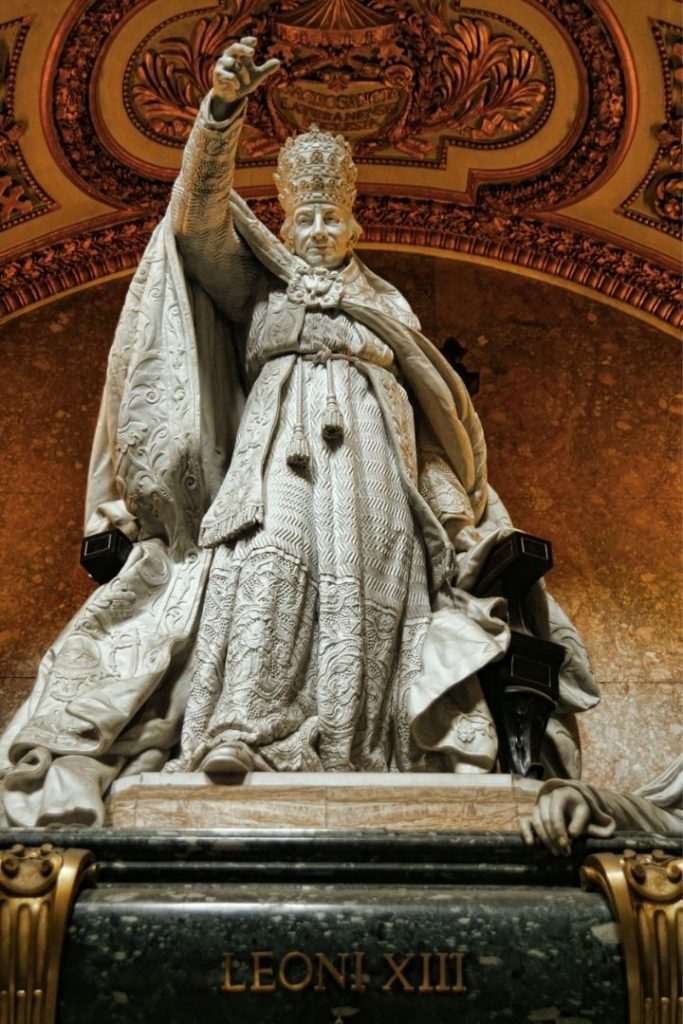
16. Anselm of Canterbury
Growing up as a young boy, he always wanted to be a monk. Hence, he went to a Benedictine monastery in France where he studied about the great writers of the Catholic faith. He spent much of his time writing and teaching about some of the deepest mysteries of the catholic faith. He was later appointed the head of the monastery by the other monks.
Anselm was appointed the archbishop of Canterbury by the Pope. He fought against injustices and also opposed slavery. He died in 1109.
17. Gianna Beretta Molla
Gianna was born in 1922 in Milan, Italy. She attended college and medical school and got married in 1955. She worked as a pediatrician when she had three kids. Together with her husband, they taught their kids about the Catholic faith.
She was discovered to have a cancerous tumor when she was expecting her fourth child. Surgery was to be performed, but the baby’s life would be in danger. She asked the doctors to let the baby live. Gianna died seven days later, after her baby was born. She died a painful death at 39 years old, knowing she had left behind her children.
Gianna was the first woman physician to be declared a saint by pope John Paul II in 2004.
18. Catherine of Siena
Catherine was born in 1347 in Siena, Italy. She was the 23rd child out of the 25 children her parents had. As a young girl, she knew what she wanted. She loved to pray and wanted to remain chaste and serve God for the rest of her life.
She helped prisoners, nursed those who were sick, and also taught people about God. She also encouraged people always to grow closer to God. Pope Pius II canonized Catherine in 1461. She is also one of the two patron saints of Italy.
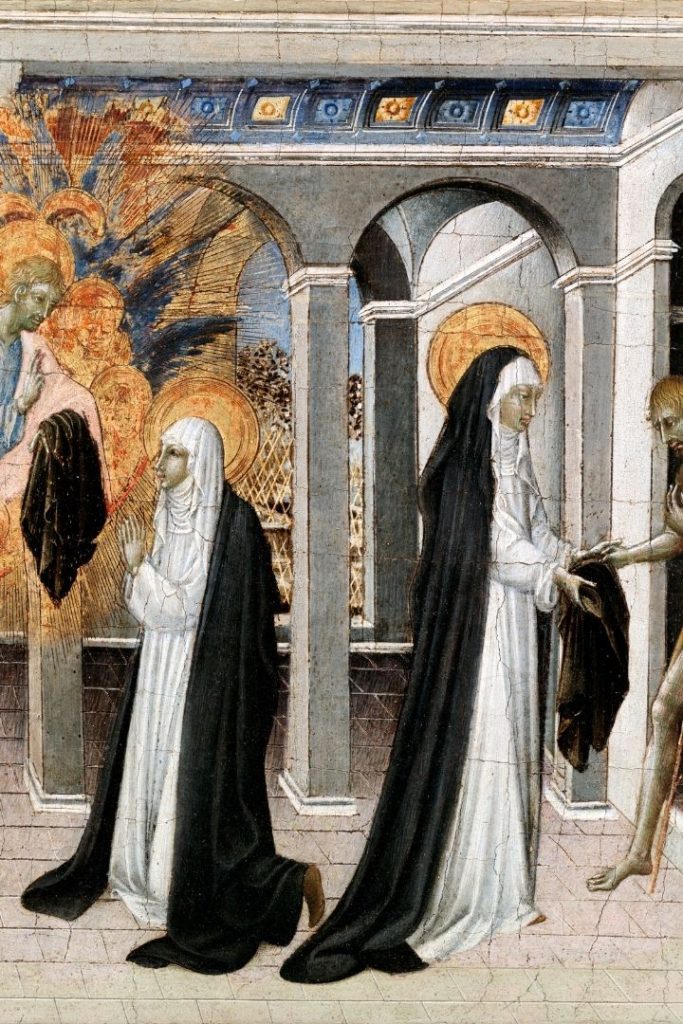
19. Dominic Savio
Dominic Savio was born in 1842. As a young boy, he had great faith. Dominic was always eager to learn, and when Father Bosco met him, he was impressed. He invited Dominic to attend one of the schools he had founded for educating poor boys.
At school, Dominic always spared time to pray and help the other students. He always looked up to Father Bosco, and at one time, he asked him (Father Bosco) to help him become a saint. Unfortunately, when Dominic was 14 years old, he was struck with an unknown illness with no cure. He died peacefully just before he turned 15.
Father John Bosco lived to tell Dominic’s story, and in 1954, Dominic was named a saint. Pope Pius XII described St. Dominic as “small in size” but a towering giant in spirit.
20. Rita of Cascia
Rita was born in 1381 in a small village near Cascia, Italy. She always wanted to be a nun from a young age. Rita would visit nuns at the Augustinian convent. Rita got married, but her husband died in a fight leaving her with two sons.
At the age of 36, she revived her dream of being a nun, and she joined the Augustinian convent. One day as she was praying and meditating, a small wound appeared on her forehead. The wound was similar to that of the crown of thorns that Jesus wore.
Before she died, she wanted a rose from a friend that visited her. The rose flower was to be plucked at her childhood home. Surprisingly, her friend got the flower, yet it was winter and snowing. You will always find artwork of St. Rita holding roses. She died in 1457 and was canonized in 1900.
21. Gregory VII, Pope
Gregory was born in 1020 in Tuscany and named Hildebrand Bonizi. He was trained for the priesthood in Rome, and Pope Gregory VI chose him to be his chaplain. When Pope Gregory VI died, he went to study and pray at the monastery. Within three years, he was recalled to Rome to be an advisor to Pope Leo IX.
He counseled seven popes in total, and in 1073, he was elected Pope after demands from the people and priests. He chose the name Gregory VII. As a service to humanity, he tried to solve problems that were hurting the church. He has been a saint since 1606.
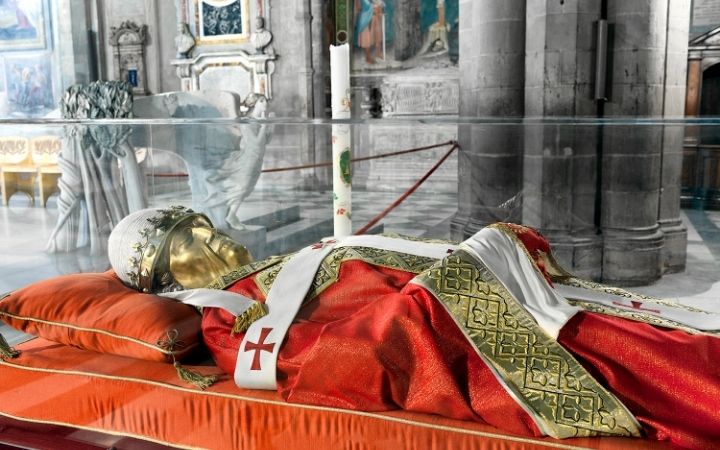
22. Philip Neri
Philip was born in 1515 in Florence, Italy. He studied in Rome, and during his free time, he prayed in churches and catacombs (burial places for saints). He resorted to helping the poor and the sick people of Rome.
This led him to want to become a priest. He was ordained in 1551 and founded the oratory- a community of men who gathered to sing, pray, and discuss their faith. He died in 1595 and was canonized in 1622.
23. Augustine of Canterbury
He is also known as the “Apostle of England.” In the year 596, he led a group of monks who would go around England to preach Christianity. Since England was not civilized then, it was risky for them, and they opted to go back to Rome.
Pope Gregory advised them to try again, and they left and landed at the English coast. Even though he faced many challenges trying to spread Christianity in England, he never gave up. He died in 604, and the church still honors him as a saint.
24. Paula Frassinetti
Paula’s mother died when she was just nine years old. She had to take care of her father and siblings until she was 19 years old. While staying with her brother, who was then a priest (Father Giuseppi), she interacted with the youths of his parish. She realized that she was talented in teaching.
In 1934, she joined other women to establish a community that helped educate poor children. They would work at night and teach during the day. The group was known as the Sisters of St. Dorothy. They opened many schools in Rome, and in 1866, she sent sisters to open more schools in Portugal and Brazil.
She died in 1882, leaving a notable legacy. Her sisters can be found teaching in North America, Latin America, Asia, Africa, and Europe. She was canonized in 1984 by Pope John Paul II.
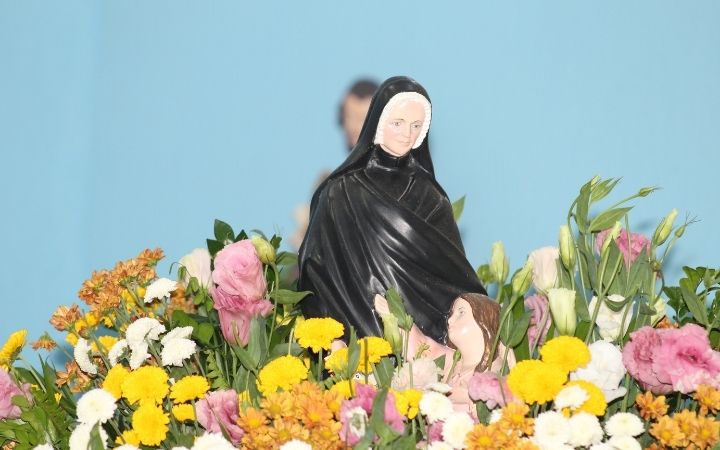
25. Anthony of Padua
Anthony was born in Portugal in the year 1195. At the age of 11 years, he became an Augustinian Canon. He spent 11 years studying the bible and praying. At the age of 26, he saw the martyred Franciscans and he felt too that he wanted to die for his faith. He then joined the Franciscans in preaching to people in Africa.
He fell ill in Morocco and decided to go back home. En route home, his ship was swept off, and it landed in Sicily. He ended up studying and praying alone. One day, he was asked to preach by a Franciscan brother. He preached well, and he knew he was to become a great preacher in Italy and his home church in Padua.
He died in 1231 at the age of 36. He was declared a saint for the many miracles he performed. He helped many people who had lost God return to the narrow path. He is the patron of lost items. In 1946, he was declared a doctor of the church by Pope Pius XII.
26. Pier Giorgio Frassati
Pier was born in 1901 in Turin, Italy. He prayed the Rosary and also attended mass every day to receive the eucharist. He was always concerned about others, especially the poor. He joined the St. Vincent de Paul Society, where he spent his time helping the sick and the poor.
At 24 years of age, he became ill with polio. People suspected that he had contracted it from people he was helping. He was declared “blessed” by Pope John Paul II in 1990. Pope John Paul II called him “a man of Beatitudes.”
27. Maria Goretti
After her father’s death, Maria Goretti and her mother and siblings moved to another house. It belonged to Alessandro and his father. She would always remain behind to watch over her young sister while her mother and older sister worked in the fields.
Alessandro tried to rape Maria, but Maria defended herself. She believed in chastity, and she wanted to remain pure. One day, Alessandro attacked her and was forcing her into a sexual act against her will.
She refused, but unfortunately, Alessandro stabbed her with a knife 14 times. She died the following day, and before she died, she received the holy communion and told her mother that she had forgiven Alessandro.
Alessandro served 30 years in prison, but after realizing his mistake, he changed his ways, and he went to live with the Franciscans as a layperson. Maria was canonized in 1950.
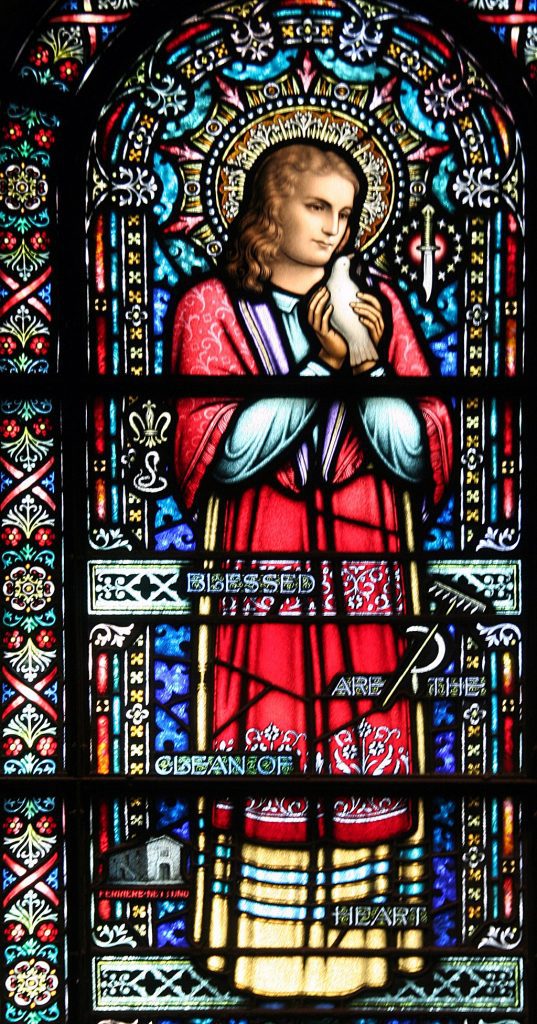
28. Pauline of the Agonizing Heart of Jesus
She was born in 1865 as Amabile Visintainer. As a young girl, she attended all-religion classes and helped in chores like cleaning the chapel. When she was 15 years old, she took care of a dying woman together with her friend. From the incident, she founded the Congregation of the Little Sisters of the Immaculate Conception.
They dedicated their lives to helping others by being signs of Jesus’ love. She then came to be known as Sister Pauline of the Agonizing Heart of Jesus. The congregation grew in numbers, and she became the superior. Her works continue today in Africa, South America, and Europe. She died in 1942 and was declared a saint in 2002.
29. Benedict of Nursia
Benedict was born around 480 AD in Nursia, Italy. He lived in a cave for three years near Subiaco, praying. Some men approached him and wanted advice on how to live holy lives. He then formed a community of monks at Monte Cassino near Naples, Italy.
They prayed eight times a day and vowed to remain poor, pure, and obey their leader. In the 20 years that followed, Benedict formed 12 more monasteries. He died in 547 and was buried next to his twin sister, St. Scholastica. He was canonized in 1220.
30. Alphonsus Liguori
Alphonsus was born in 1816. From the time he was young, he showed signs of being helpful. By the time he was 16 years old, he was already a lawyer. He always prayed and attended mass even on days that he appeared in court. He realized that his calling was that of being a priest. He went to study theology and was later ordained at the age of 29.
He preached and helped the poor. He formed an order called the Redemptorists that comprised men who served peasants and other average families. Alphonsus also wrote hymns and books.
He died at the age of 91 from physical afflictions. He was canonized in 1839 and named a Doctor of the church in 1871.
The Bottom line
After reading this, you will realize that saints played a big role in their communities. You may not be one, but it is always good to leave a legacy; what should people remember you for once you are gone?
Who is your favorite saint and why? Share your thoughts with us in the comment section, we would love to hear from you!

Community of passionate writers and content creators who share a love for Italian heritage, culture, travel, food, and the Italian-American community. Our mission is to celebrate Italy’s rich history and traditions and connect with others who share the same passion.

